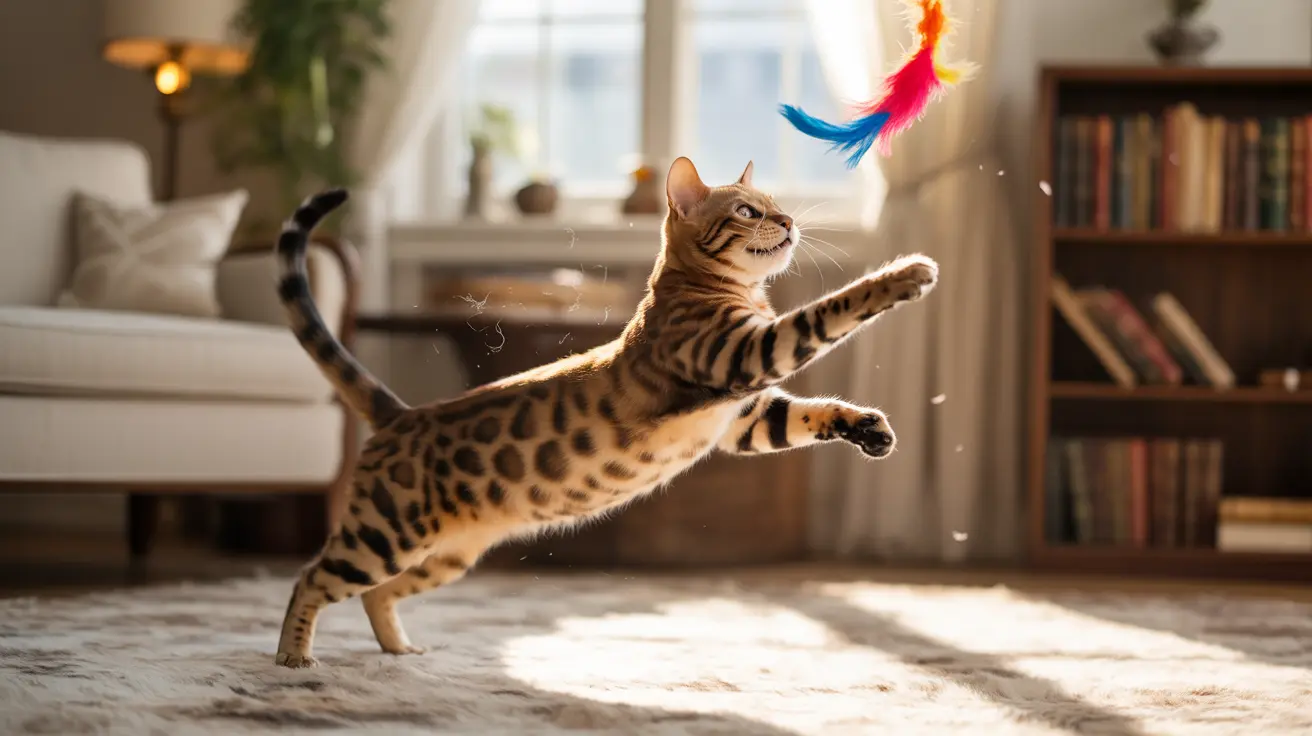Understanding how cats play is essential for every cat owner. These fascinating creatures have unique ways of expressing their playful nature, and learning to engage with them properly can strengthen your bond while keeping them physically and mentally healthy.
From mimicking hunting behaviors to engaging in social play, cats display a rich variety of playful activities that reflect both their wild instincts and their individual personalities. Let's explore the fascinating world of feline play and learn how to best interact with our furry friends.
The Natural Instincts Behind Cat Play
Cat play is deeply rooted in their predatory nature. When your cat crouches, stalks, and pounces on a toy, they're actually practicing vital hunting skills that their wild ancestors needed for survival. This instinctive behavior remains strong even in domesticated cats, making play an essential outlet for these natural impulses.
During play sessions, cats demonstrate remarkable agility and coordination. They might chase moving objects, bat at dangling toys, or perform impressive acrobatic moves – all behaviors that would serve them well in the wild.
Common Types of Play Behaviors
Cats engage in several distinct types of play, each serving different purposes in their development and daily life:
Solo Play
- Batting around small toys
- Chasing their own tail
- Exploring boxes and paper bags
- Playing with interactive toys
Interactive Play with Humans
- Chasing wand toys or laser pointers
- Fetch (yes, some cats do play fetch!)
- Hide-and-seek games
- Puzzle feeders and treat games
Reading Your Cat's Play Signals
Understanding your cat's body language during play is crucial for maintaining positive interactions. A playful cat typically displays:
- Forward-pointing ears
- Relaxed whiskers
- Dilated pupils
- Loose, flowing movements
- A gently swishing or upright tail
Creating Engaging Play Sessions
The key to successful play with cats lies in mimicking their natural prey's movements. Toys should move like small animals – darting, stopping, and changing direction unpredictably. This keeps your cat engaged and satisfies their hunting instincts.
Regular play sessions, ideally 2-3 times daily for 10-15 minutes each, help maintain your cat's physical and mental well-being. Morning and evening sessions often work best, as these align with cats' natural active periods.
Safety Considerations During Play
While play is essential, safety should always come first. Avoid using your hands as toys, as this can lead to aggressive behavior. Instead, always use appropriate cat toys that can't be swallowed or cause injury. Remove string toys after supervised play to prevent accidents.
Frequently Asked Questions
How do cats use play to mimic hunting behaviors like chasing and pouncing?
Cats naturally incorporate hunting behaviors into play by stalking, chasing, and pouncing on toys. These actions help them practice skills they would need for hunting in the wild, even though they're domesticated.
What types of toys and activities do cats prefer when playing with humans?
Most cats enjoy interactive toys like wand toys, laser pointers, and balls. They also like toys that move unpredictably or make subtle sounds. Each cat has individual preferences, so it's good to offer variety.
How can I tell if my cat's play is friendly fun or turning into aggression?
Friendly play involves relaxed body language, retracted claws, and gentle movements. Signs of aggression include flattened ears, hissing, growling, and fully extended claws. If you notice these signs, end the play session immediately.
Why is interactive play important for my cat's physical and mental health?
Interactive play provides essential exercise, prevents obesity, reduces stress, and maintains mental stimulation. It also strengthens the bond between cats and their owners while preventing behavioral issues.
How can I engage my adult or older cat in play suitable for their energy level?
Adjust play sessions to match your cat's abilities and energy level. Use slower-moving toys, shorter sessions, and ground-level activities. Even older cats benefit from gentle play that keeps them active without overexertion.
Remember, every cat is unique in their play preferences and energy levels. Pay attention to what your cat enjoys, and adjust your play style accordingly. Regular, engaging play sessions will help keep your feline friend happy, healthy, and well-bonded with you.






